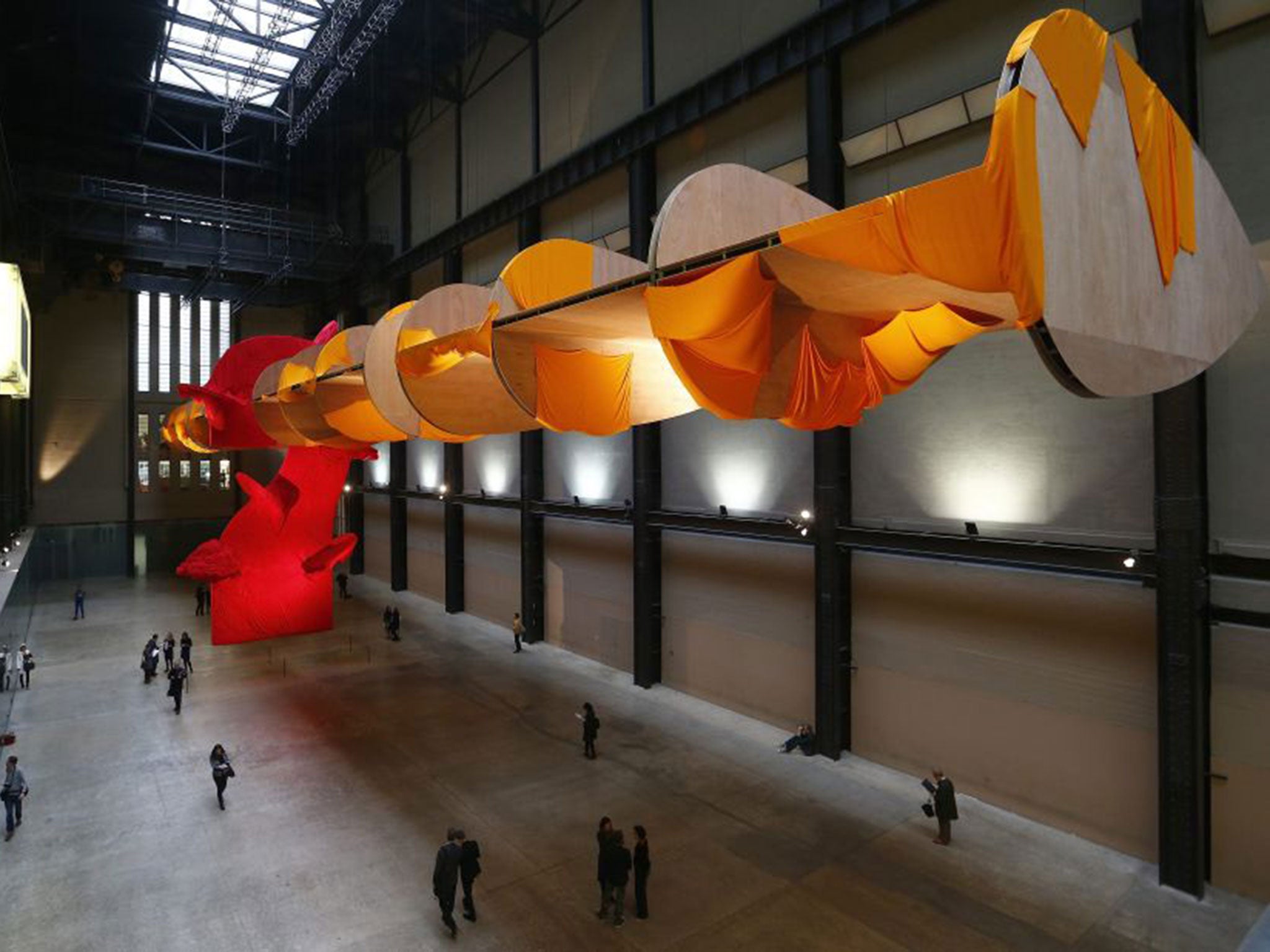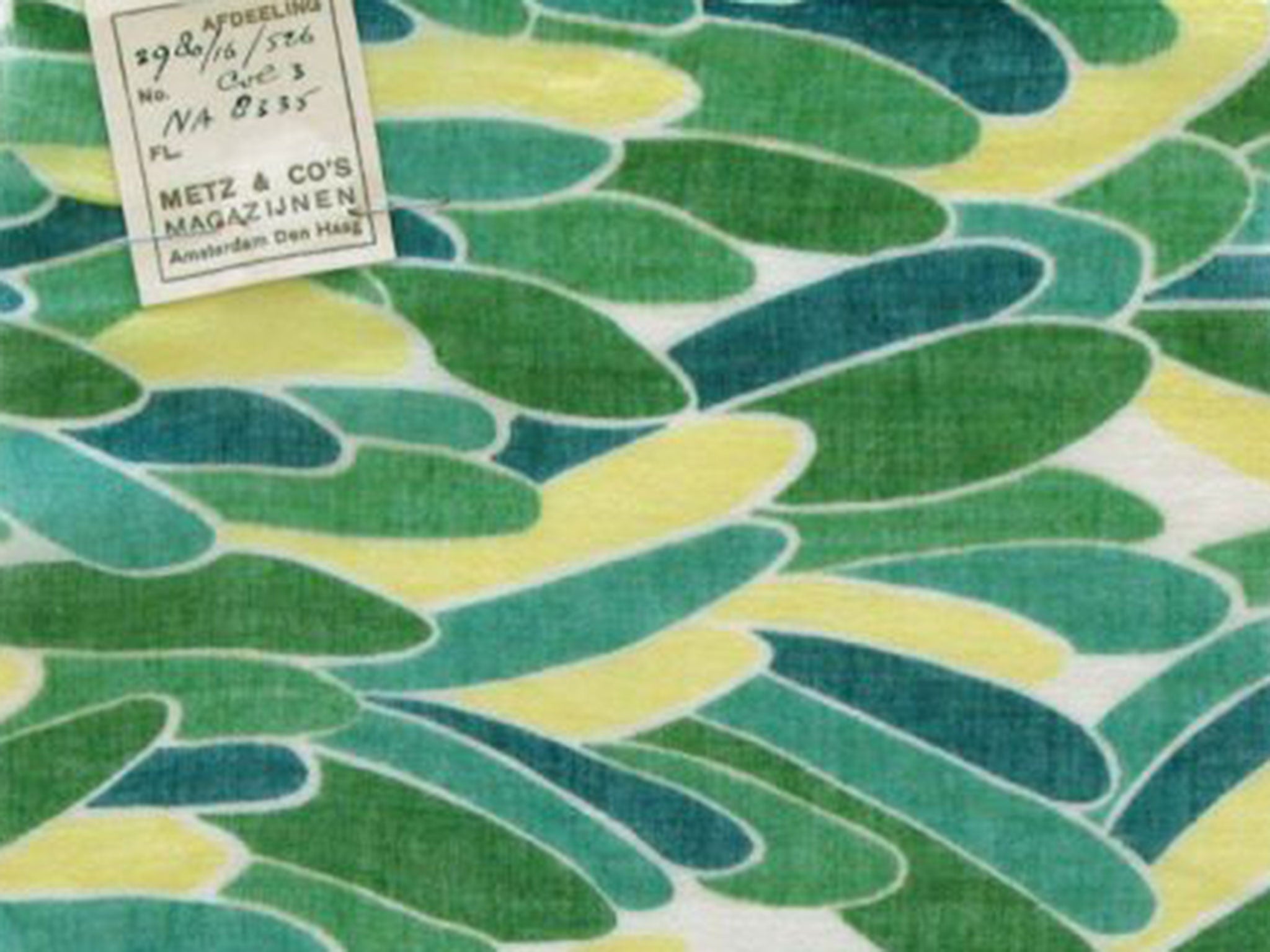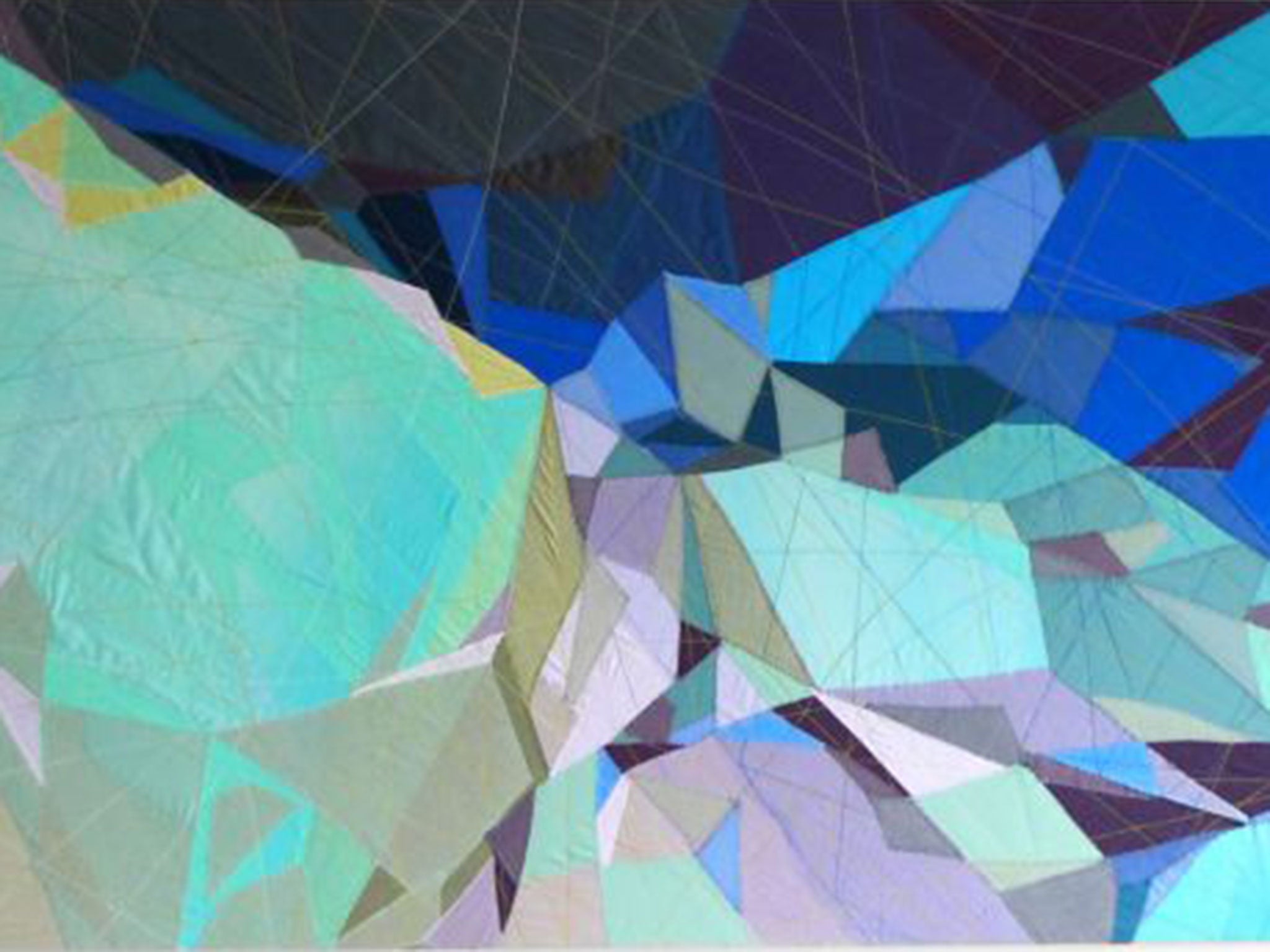Fanfare for fabric as two major London galleries put textiles in the spotlight
Finally, the poor relation of the creative world is getting recognition it deserves

In the most snobbish of art critic circles, the humble tradition of textile design is often frowned upon as poor relation to big-money paintings and sculpture.
But as Tate Modern filled its industrial-sized Turbine Hall with a new artwork principally composed of cloth last week, crafty artists believe their time may have finally come.
One piece by the American poet and sculptor Richard Tuttle hangs 12 metres high in the main hall, a colourful composition of fabrics, and its appearance comes as galleries around the world open their doors to textile-led exhibitions.
Across London, the Whitechapel Gallery is holding a five-decade retrospective of Tuttle's textile work, offering further proof of the craft as a legitimate art form.
"We can see that many galleries are showing artists who have worked with textiles," said Magnus af Petersens, the curator at the Whitechapel Gallery.
"Maybe we are beginning to be more and more understanding of the complexity of textiles– it's sophisticated art," he added.

Although artists such as Sigmar Polke and Gerhard Richter are well-known for their work with fabric, textiles were not always considered fine art forms and creators went unheralded.
Mr af Petersens explained: "It was considered more traditional and less creative. It would follow traditional patterns and the makers were not art stars but anonymous weavers. Now, there is a fascination for craft, and the physicality and beauty of textiles. Maybe it has to do with so much else being mediated through digital media."
Next year, Tate Modern will follow the trend by unveiling a retrospective featuring the textile work of the French artist Sonia Delaunay.
Achim Borchardt-Hume, the head of exhibitions at Tate Modern, said: "There is a much greater openness to look at different media. I think textiles are now coming into play. I think historically textiles was seen much more as a craft that was made by women and therefore less important than art made by men, and that painting was seen as more important and substantial than work in other mediums. But painting is nothing else but painted cloth."
The abstract textile artist Sarah Symes grew up and studied in the UK but relocated to North America to kickstart her career seven years ago. "When I first started out, I couldn't believe how closed the gallery owners were to hanging textiles, and that was a real wake-up call for me," she said.
Symes, who last exhibited in the UK in 2011, says that she has to present herself as a fine artist by stretching her textile art for galleries to pay attention.

But now, she added, attitudes are changing. "I think art galleries more than ever are open to showing anything, the more off-the-wall the better," she said,
Ms Symes added: "With textile art, the appeal is that you can see the work that has gone into it. The value is indisputable. With a piece of textile art, you can see every stitch and you can see all the hours that went into it."
The test, however, may be in what collectors think – and how much artists will accept for their work. Dealers are yet to find a soaring market for textile art, however many gallery walls they decorate.
Peta Smyth, who has been dealing in European textiles from her shop in Pimlico for 35 years, put the slow uptake down to collectors buying artwork according to the new trends in housing decor.
"There's a new type of decor in houses. We're in the minimalist phases and people are going for more modern textiles," she said.
Maintaining textiles could also be putting off collectors, she added: "People talk about moths, but I think that's not a big factor. Textiles do have to be kept out of the sunlight; a little bit of attention does have to be given."
Ms Smyth who specialises in textiles from the 17th century added: "I think people might be anxious about this factor, that they are more delicate, but they're usually quite strong."
Join our commenting forum
Join thought-provoking conversations, follow other Independent readers and see their replies
Comments